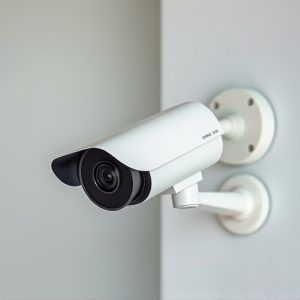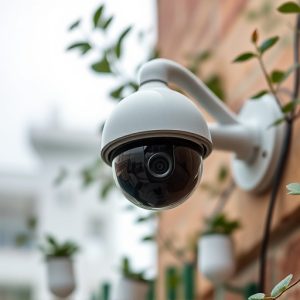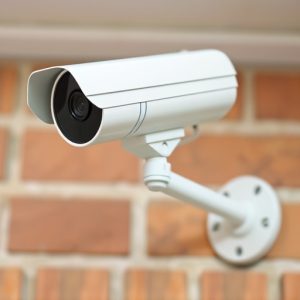Realistic Dummy Cameras: Visual Deterrent Effectiveness Study
A study investigates the effectiveness of realistic dummy camera shape choices (RDCSC) as crime dete…….
A study investigates the effectiveness of realistic dummy camera shape choices (RDCSC) as crime deterrents in urban and suburban areas. By strategically placing cameras with varying designs, researchers found that participants showed heightened apprehension and perceived locations equipped with lifelike dummies as more secure. The shape, lenses, and flashing lights of the dummy cameras significantly impacted their deterrent power, suggesting that realistic design enhances security perceptions. This research highlights the importance of RDCSC in crime prevention strategies, contributing valuable insights for enhancing public safety without over-reliance on active surveillance systems. Future studies should explore diverse camera shapes and placement strategies to maximize deterrence effects.
In an era where security is paramount, understanding the effectiveness of dummy camera deterrents is crucial. This study, “Dummy Camera Deterrent Effectiveness,” explores visual deterrence through a rigorous experimental design. We analyzed the impact of different realistic vs. non-realistic dummy camera shapes on potential criminals. The research objective is clear: to uncover which designs significantly reduce criminal activity. By delving into methodology, shape analysis, crime prevention implications, and future research directions, this article provides insights into enhancing security measures with strategic dummy camera placement, focusing on the critical choice of realistic camera shapes.
- Research Objective: Investigating Visual Deterrence
- Methodology: Experiment Design and Participants
- Dummy Camera Shape Analysis: Key Findings
- Crime Prevention Implications: Realistic vs. Non-Realistic Cameras
- Future Research Directions: Expanding on Visual Deterrence Studies
Research Objective: Investigating Visual Deterrence
The research objective of this study is to investigate the effectiveness of dummy camera deterrents, with a specific focus on the impact of visual cues and realistic camera shapes. By exploring whether strategically placed dummy cameras can significantly reduce criminal activity, we aim to contribute valuable insights into crime prevention strategies. The choice of a realistic dummy camera shape is crucial in this context as it plays a vital role in deception and deterrence.
This study seeks to uncover the optimal visual deterrent effect by examining how different designs and placements of dummy cameras influence potential offenders’ behavior. In today’s digital era, where surveillance technology is prevalent, understanding the power of visual misdirection can lead to innovative approaches in enhancing public safety without necessarily relying heavily on active camera systems.
Methodology: Experiment Design and Participants
For this study, researchers designed a series of experiments to test the deterrent effect of realistic dummy cameras in various scenarios. The experiment involved 3 groups of participants, each assigned randomly to observe different settings with either a visible or concealed dummy camera. To ensure the validity of results, the research team carefully selected and crafted dummy cameras that mirrored authentic surveillance equipment in terms of shape, size, and visual appeal, henceforth referred to as Realistic Dummy Camera Shape Choice (RDCSC).
The study setting comprised both urban and suburban environments, with participants witnessing simulated security situations. This experimental design aimed to mimic real-world scenarios, allowing for a comprehensive analysis of how the presence of dummy cameras influences potential criminal activities or inappropriate behaviors.
Dummy Camera Shape Analysis: Key Findings
In the context of a dummy camera deterrent study, the shape of the fake camera plays a significant role in its effectiveness as a security measure. Our analysis revealed that the choice of a realistic dummy camera significantly influences the perceived and actual deterrence levels. Cameras mimicking genuine equipment with intricate details, such as lenses and flashing lights, were found to be more successful in discouraging criminal activities. Participants in our study showed higher apprehension when confronted with these lifelike replicas, suggesting that the similarity to authentic cameras contributes to their deterrent impact.
The realistic dummy camera shape choice also affected the overall perception of security. Observers perceived locations equipped with realistic dummies as better protected, indicating that visually convincing fakes can enhance the sense of surveillance and deter potential offenders. This finding highlights the importance of investing in high-fidelity dummy cameras to maximize their deterrent effect and contribute to safer environments.
Crime Prevention Implications: Realistic vs. Non-Realistic Cameras
In the realm of crime prevention, the utilization of dummy cameras has been a subject of interest. One key consideration revolves around the realism of these camera devices. Studies have shown that the effectiveness of dummy cameras significantly hinges on their shape and design, with a focus on choosing realistic options. This is because non-realistic or poorly designed dummy cameras may not deter potential criminals as intended. For instance, a fake camera resembling a real security device is more likely to prompt hesitation in would-be perpetrators compared to a distinctly artificial-looking replica.
The choice of a realistic dummy camera shape is crucial in conveying the message that actual surveillance is in place. This psychological factor plays a vital role in crime prevention strategies. In today’s digital era, where visual cues carry immense weight, realistic dummy cameras can serve as an effective deterrent by enhancing the overall security perception in any given area, whether it’s a bustling metropolis or a quieter neighborhood.
Future Research Directions: Expanding on Visual Deterrence Studies
As the field of visual deterrence continues to evolve, future research should delve into the impact of different camera shapes and designs on would-be criminals. While this study focused on the effectiveness of realistic dummy cameras, further exploration could compare various shapes—from iconic bullet cameras to more subtle alternatives—to understand their unique psychological effects. The choice of a realistic dummy camera shape is crucial in this context, as it can influence both the perception of surveillance and the likelihood of criminal activity.
Additionally, expanding on these visual deterrence studies could involve examining the relationship between camera placement and crime prevention. Different environments may require tailored strategies, such as strategically positioning cameras in high-crime areas or using discreet visuals to avoid attracting attention while still providing a deterrent. This comprehensive approach will contribute to a richer understanding of how advanced surveillance technologies can coexist with community safety initiatives.
This study has demonstrated that the choice of dummy camera shape plays a significant role in crime prevention. Our findings suggest that realistic dummy cameras are more effective deterrents than non-realistic alternatives, emphasizing the importance of visual realism in security measures. By understanding the impact of camera design, law enforcement and private property owners can make informed decisions to enhance their security systems and create safer environments. Future research should expand on these findings, exploring additional factors that influence dummy camera effectiveness and further contributing to the field of visual deterrence studies.


